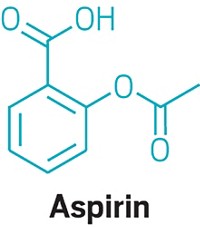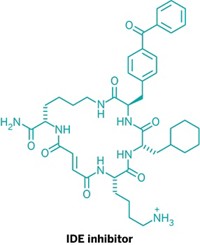Advertisement
Grab your lab coat. Let's get started
Welcome!
Welcome!
Create an account below to get 6 C&EN articles per month, receive newsletters and more - all free.
It seems this is your first time logging in online. Please enter the following information to continue.
As an ACS member you automatically get access to this site. All we need is few more details to create your reading experience.
Not you? Sign in with a different account.
Not you? Sign in with a different account.
ERROR 1
ERROR 1
ERROR 2
ERROR 2
ERROR 2
ERROR 2
ERROR 2
Password and Confirm password must match.
If you have an ACS member number, please enter it here so we can link this account to your membership. (optional)
ERROR 2
ACS values your privacy. By submitting your information, you are gaining access to C&EN and subscribing to our weekly newsletter. We use the information you provide to make your reading experience better, and we will never sell your data to third party members.
Biological Chemistry
Another Target For Alzheimer's Drugs
A molecular probe fashioned from a cancer drug that inhibits amyloid-β helps uncover γ-secretase activating protein
by Carmen Drahl
September 6, 2010
| A version of this story appeared in
Volume 88, Issue 36
With a molecular probe inspired by a leukemia medication, researchers have discovered a new protein target for drugs to treat Alzheimer’s disease (Nature 2010, 467, 95). Blocking the activity of the target, called γ-secretase-activating protein, might stop accumulation of the neurotoxic peptide amyloid-β and slow progression of the brain disease. Blocking enzymes that make amyloid-β has been challenging. One such enzyme, the protease γ-secretase, slices several important proteins besides the precursor to amyloid-β. Drugmakers take pains to design γ-secretase inhibitors that interfere only with amyloid-β, but it isn’t clear how γ-secretase distinguishes among its different substrates in nature. Rockefeller University’s Paul Greengard and colleagues thought the secret might lie with Gleevec, a leukemia drug that only inhibits γ-secretase’s ability to make amyloid-β. So they developed a light-activated, radiolabeled Gleevec probe to unravel the basis for the selectivity. They uncovered γ-secretase-activating protein, which they learned binds to γ-secretase and a precursor of amyloid-β to direct γ-secretase’s activity. Lowering levels of the activating protein reduced amyloid-β levels in a mouse with Alzheimer’s, so the team is optimistic that inhibitors of the activating protein might be successful against Alzheimer’s in humans.





Join the conversation
Contact the reporter
Submit a Letter to the Editor for publication
Engage with us on Twitter